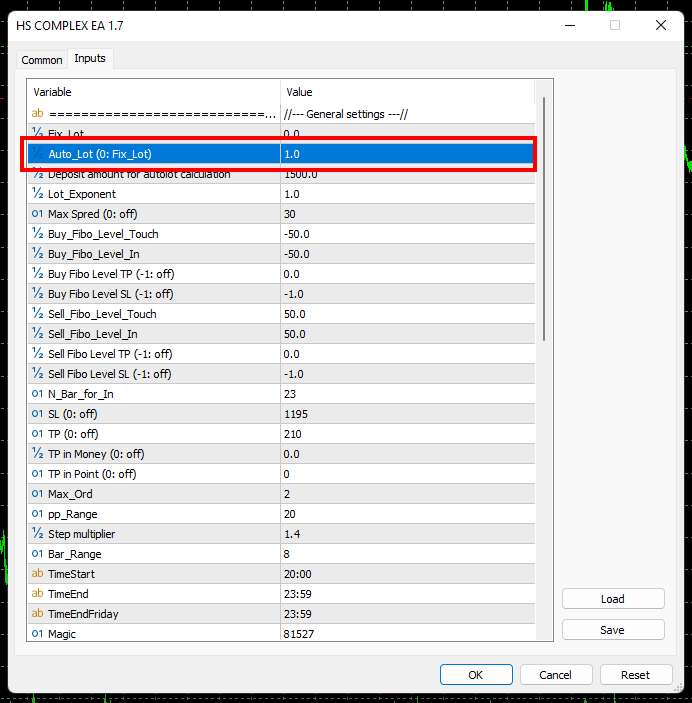HS COMPLEX TREND SYSTEM
HS COMPLEX TREND SYSTEM is a trend trading system in the Fibo price channel. This system works around the clock and makes trades in the direction of trend continuation. That is:
Examples of trading operations
We make deals on SELL during the intersection of the central level of the FIBO channel (0% level) towards the trend. We fix the result at the level of “-50%” of the FIBO channel. We make deals on BUY during the intersection of the central level of the FIBO channel (0% level) towards the trend. We fix the result at the level of “50%” of the FIBO channel (see the example below)
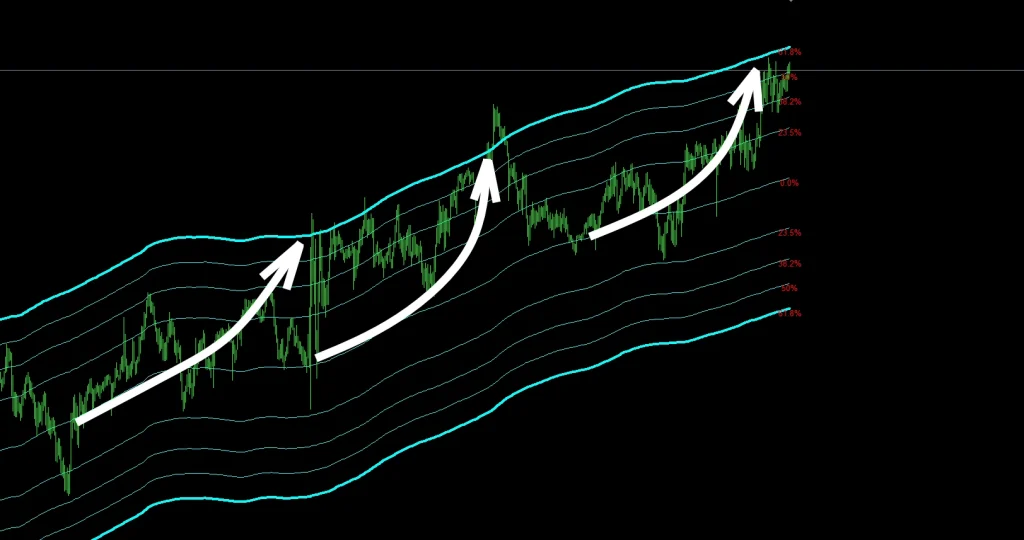
Profitability of trading
To evaluate the profitability of trading the Fibonacci channel trend, look at the results below. We present to you sets of sets for trading on the H1 timeframe. In the future, we will increase the ability to select timeframes (we will add M15 and M5 timeframes).
AUDCAD

EURCHF

EURGBP

NZDCAD

Risk management system
Of course, in addition to the profitability parameter, each trader is interested in security. Everything is correct and you are absolutely right when you pay great attention to risks.
So, to make trading less risky, we use 2 independent trading risk control systems + news filter in the trend system:
- We use Stop Loss for each transaction in order to limit losses in time. That is, if quotes go against an open deal, then this deal will be closed using a Stop Loss order. Thus, we eliminate the risk of losing trading capital.
- We use the algorithm for closing a losing trade on a rollback. That is, if quotes go in the wrong direction, then the transaction can be closed on a rollback even before the Stop Loss level is reached. This significantly reduces the trading drawdown.
- We use a news filter that allows you to disable trading in HS COMPLEX EA at the moment of maximum volatility. This significantly reduces losses and trading drawdown. Although, of course, it reduces the number of transactions. Because on the days when important economic news is released, the adviser will automatically be put into pause mode. This feature will be enabled starting from 01.02.2023
Efficient open position management - 2 trades are better than 1
Of course, we could set up this system to work with only 1 trade at a time, however, according to the optimization results, we see that the best option is to divide the initial trading lot into 2 equal parts and trade 2 trades. That is, we could trade 0.02 lots, but divided it into 2 parts of 0.01 each.
These 2 trades are opened at different price levels and each of them has its own SL and TP level. Thus, we increase efficiency and slightly reduce risks.
1.5 booster to increase profitability
According to the results of optimization and tests, we see that the average number of profitable trades in a row for this strategy is 5-7 trades. The average number of losing trades in a row is “1”. Thus, to increase profitability, you can safely use the “booster” function, which increases the size of the second transaction by 1.5 times. Thus, if the first trade closes with a loss, then the second trade is almost guaranteed to bring us a profit. And if we use a booster, then the profitability of the second trade will be 1.5 times greater!
We remind you that according to statistics, 7 deals in a row are closed with a profit and only 1 deal in a row receives a loss (on average). Also, we remind you that each trade is protected by a Stop Loss order, which limits losses and does not allow you to destroy your trading account. And another important factor is that this system only uses 2 trades at a time. So the size of the trading lot will not increase exponentially for each next trade.
Set-files for automatic tuning of the TREND SYSTEM
Set-files for MT5 platform – download here
Download and extract these archives to use in the instructions below. If you don’t have a program to work with archives, use this free 7zip program – https://www.7-zip.org/
Instruction - how to install and use REVERSE HS COMPLEX EA
Installing HS COMPLEX EA in the MetaTrader trading platform
After purchasing HS COMPLEX EA, you will receive a product file and an archive with automatic settings to your email address that you specified during the purchase.
Download the files we sent to your computer. Unpack the archive with set-files. If you do not have an archiver on your computer, you can use the free 7zip program, which can be downloaded for free from this link – https://7-zip.org/
In the upper left corner of your trading platform, find the “Files” menu item. Click on this item and select “Open Data Folder”
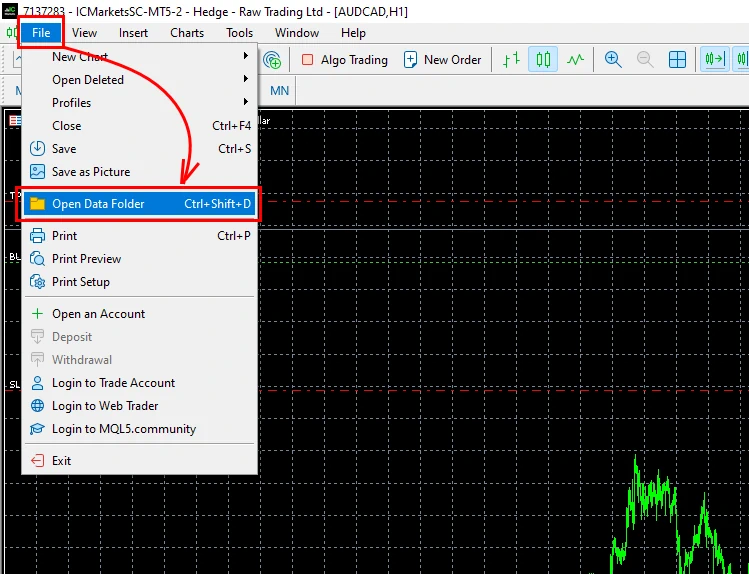
Open the MQL5 folder (if you are using the MT4 platform, then open the MQL4 folder)
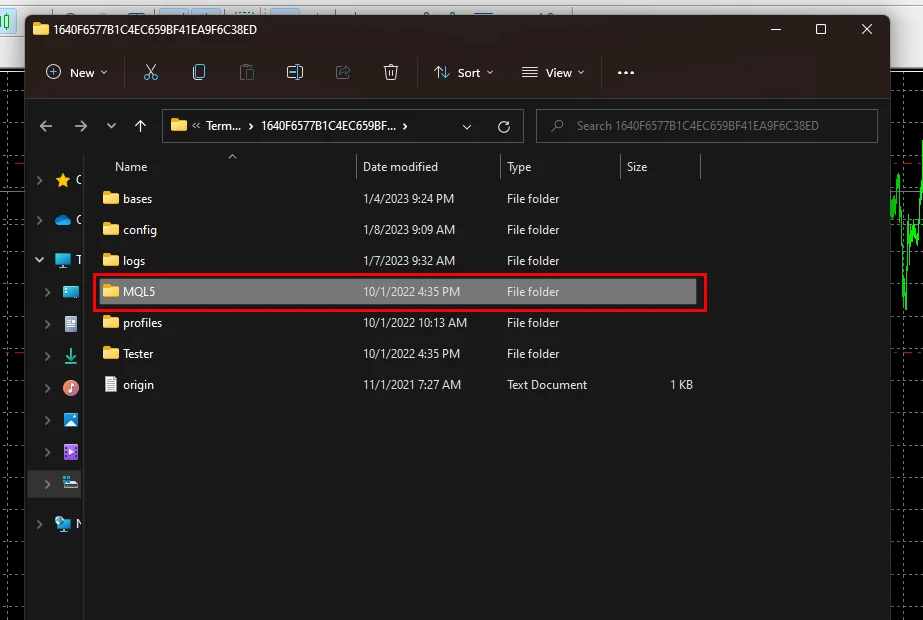
Find the “Experts” folder inside and copy the HS COMPLEX EA file inside this folder.
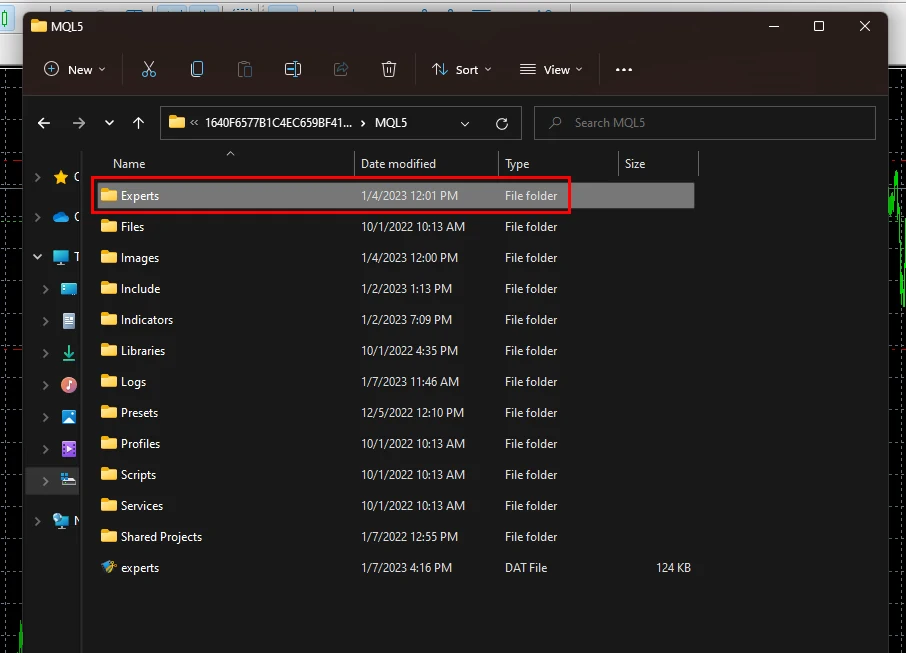
Restart your platform. This must be done in order for the trading robot file to be activated inside your trading platform.


Selection of assets for trading
In the archive with automatic settings (which we send you after purchase), you will find settings for many assets. We advise you to use the adviser on all assets, the settings for which you will find in our archive. This way you will create a diversified portfolio (significantly reduce the trading drawdown – make the profitability chart smoother).
So, in order to use the underlying assets for trading, open the windows of such assets as:
- AUDCAD
- NZDCAD
- EURGBP
- GBPCAD
To do this, click on the “Overview” item in the internal menu of the platform and select “Market Watch”
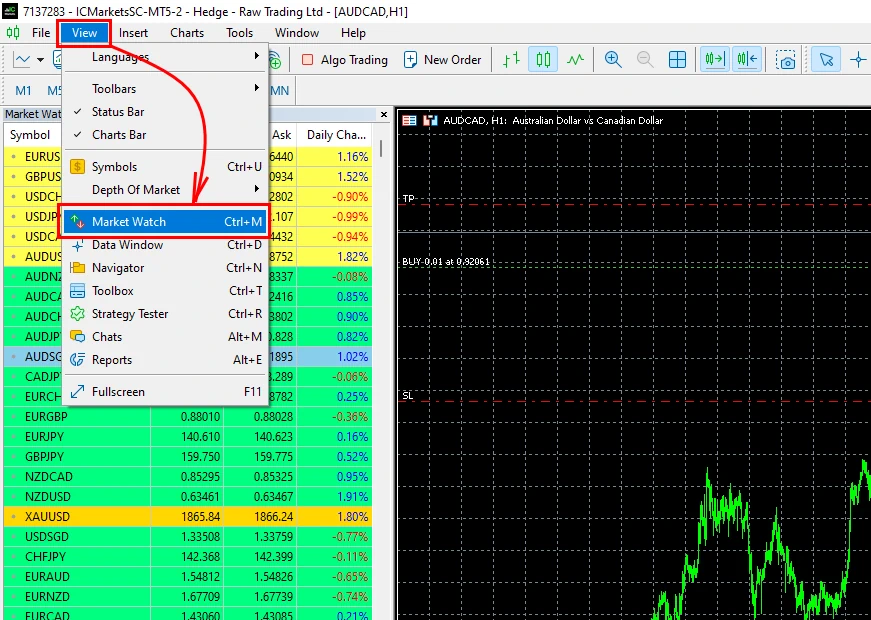
Right-click on the list of assets and select “Show All”
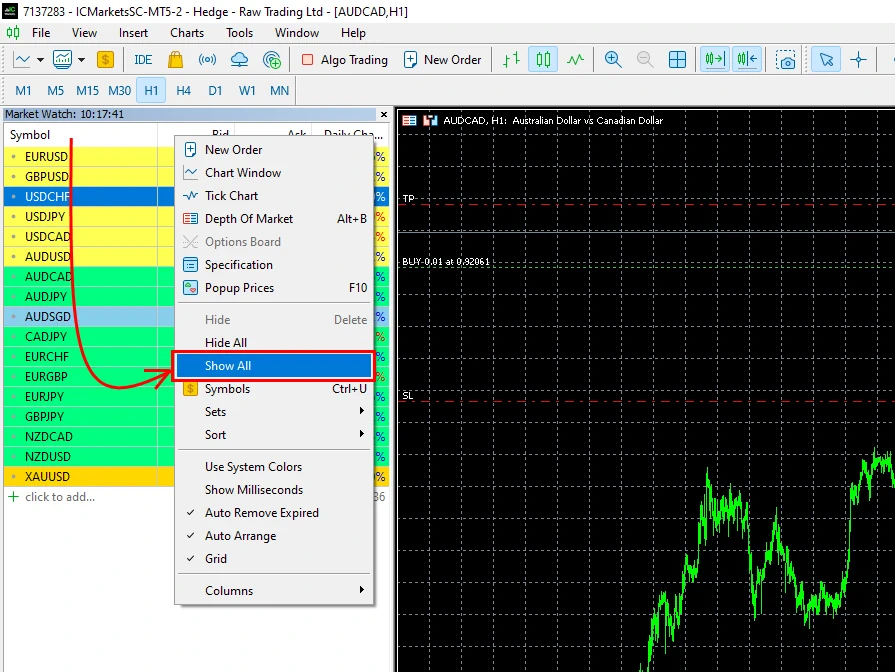
Next, in order, open the windows of the assets listed above.
For each quote window, use the H1 timeframe.

Enable “Algo Trading” button
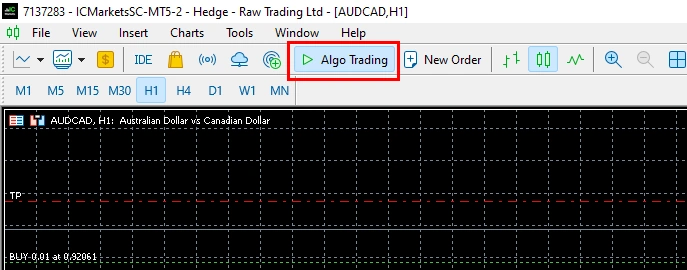
Installation of HS COMPLEX EA on the quotes chart and its automatic setting
Select the menu item “View” and the item “Navigator”
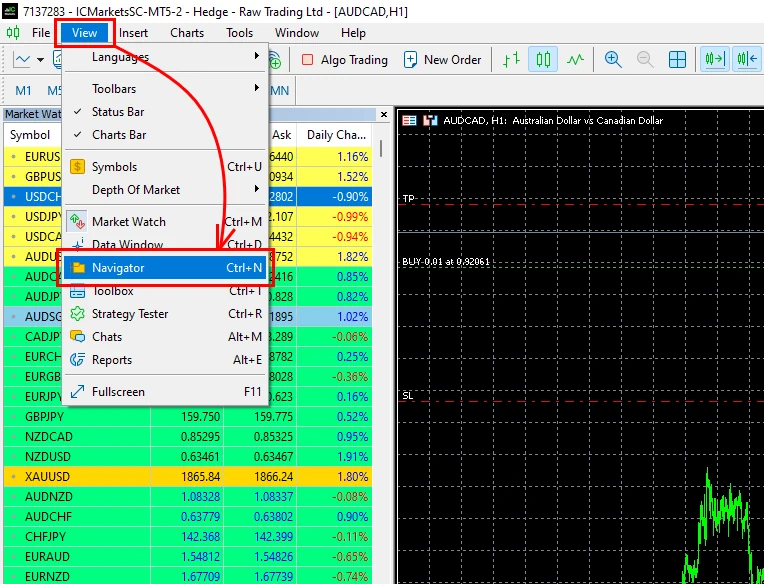
Drag and drop the HS COMPLEX EA file onto each open window. At the same time, after opening the settings window (after each drag and drop), set the automatic settings (from the “Set-files” folder that we sent you in the archive).
Please note that the name of the set file must match the name of the asset to be traded. In this way, you apply precise automatic settings to the Expert Advisor HS COMPLEX for trading on the selected asset.
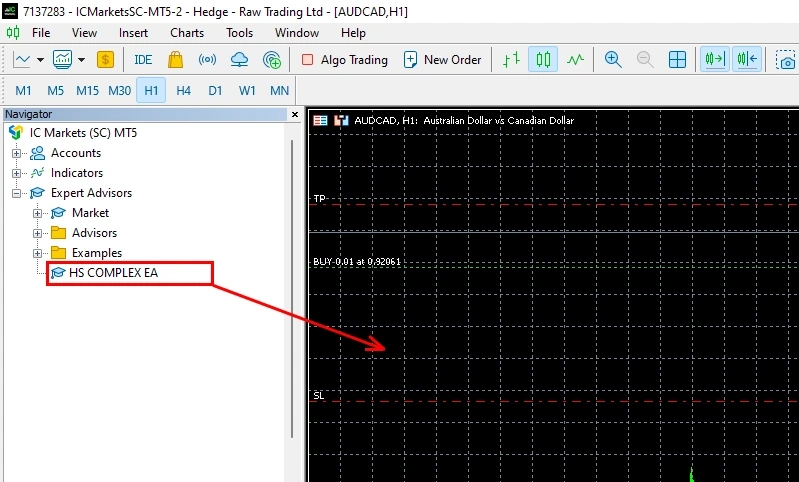
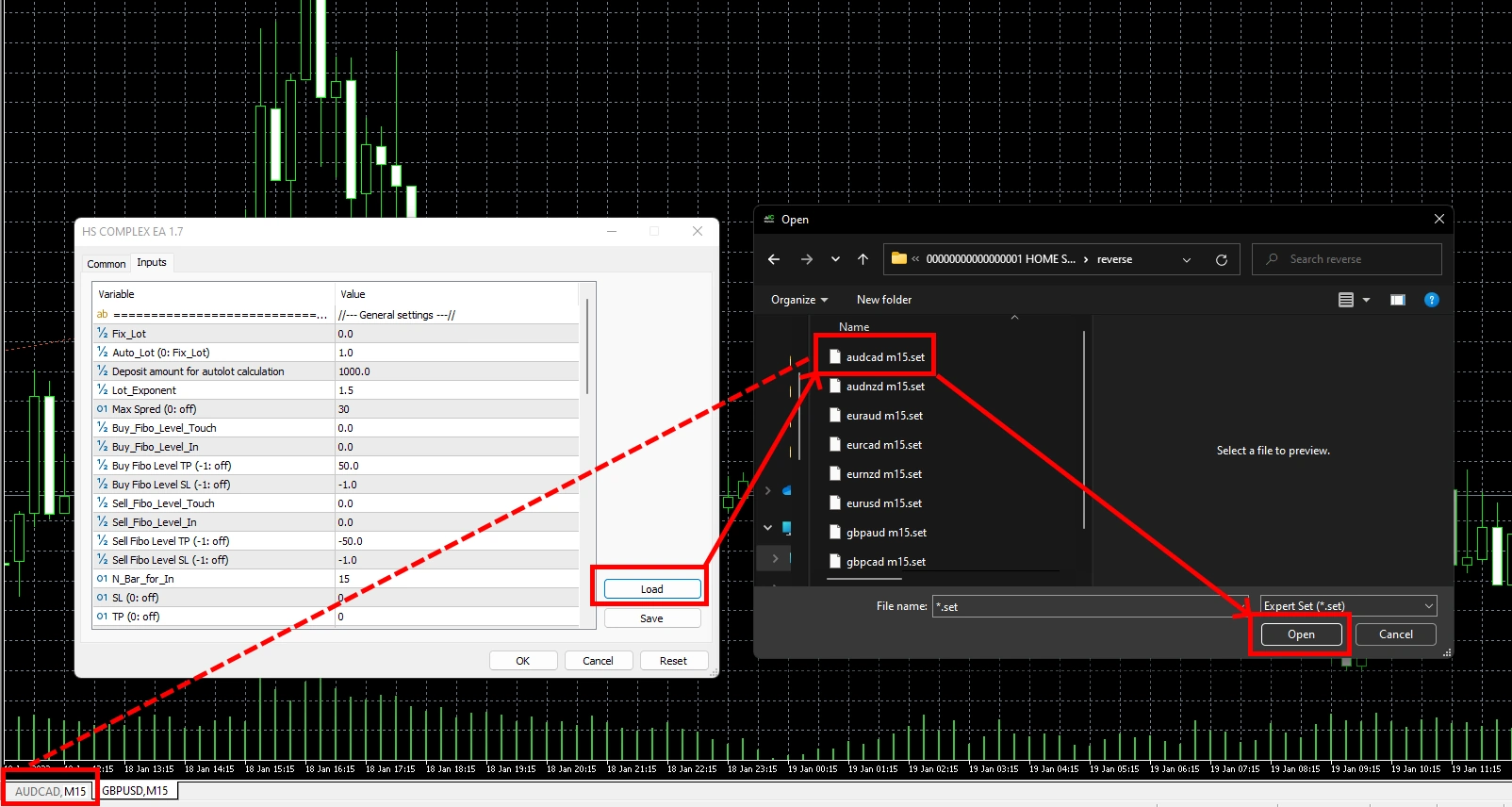
Thus, install the HS COMPLEX adviser on all the currency pairs listed above and apply the settings for a specific currency pair each time. Once again, we draw your attention to the fact that you must use the H1 timeframe and the name of the set file must match the name of the asset for trading.
Trading time adjustment
Right-click on the quote chart and select “Properties” at the bottom of the drop-down menu
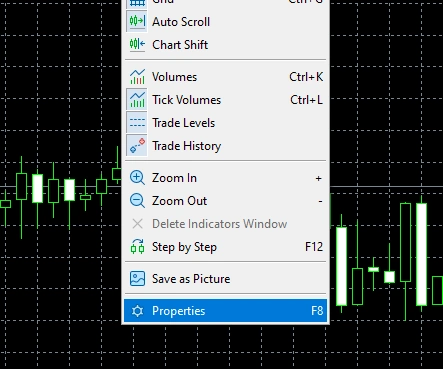
Check the display “Show period Separator”
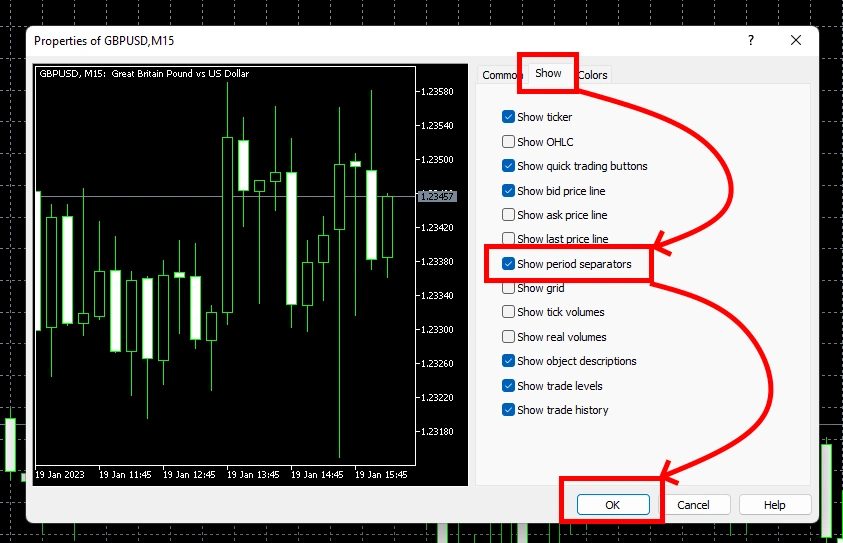
Open the quotes chart of any trading asset on the M1 timeframe and see what time the rollover occurs. It is displayed on the quotes chart as a vertical line. For example, on our platform, such a vertical rollover line occurs exactly at 00:00. These are the default settings in all of our set files.
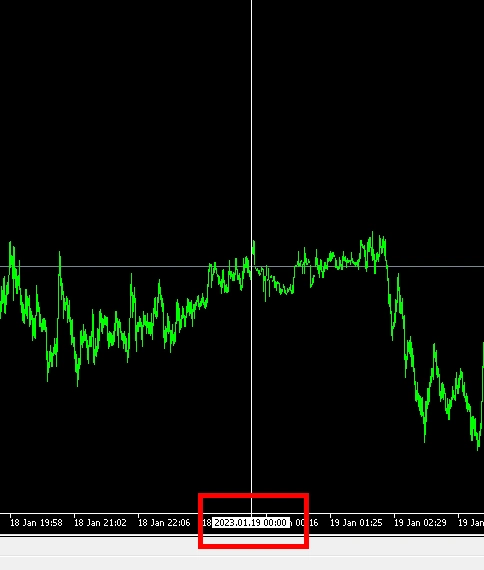
This time is used by most brokers in the world, so we set this time in all settings by default. In this case, you don’t need to do anything.
If the rollover time is different on your platform (for example, if the rollover occurs at 23:00 or at 22:00) then you need to change the time settings.
To do this, open the manual settings of HS COMPLEX EA (to do this, double-click on the adviser icon, which is located in the upper right corner of the quotes chart). Find the “Trade pause” variable and enter the time to start the trading pause so that the pause starts 5 minutes before your broker’s rollover and the trading pause ends 30 minutes later.
For example, if your broker’s rollover time starts at 23:00, then set:
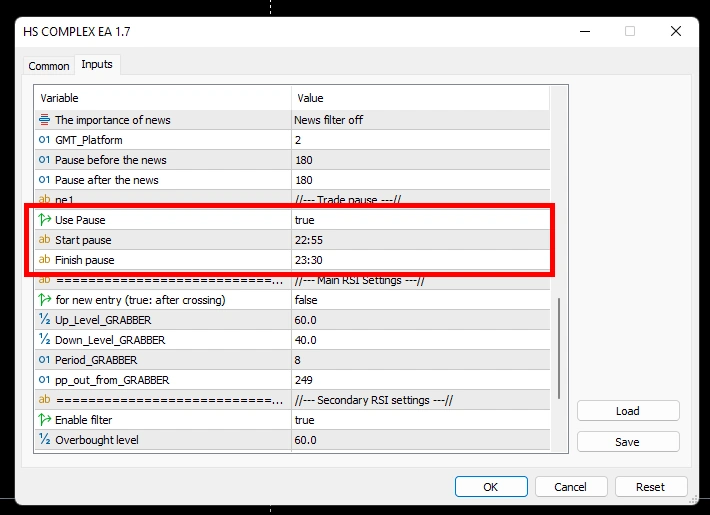
(this is an example of time settings if you have a rollover at 23:00). Thus, you need to change the time settings for trading on each asset (all windows where the HS COMPLEX adviser is installed).
Money management
To change the amount of trading risk, change the value of the AUTO-LOT variable between 1 and 3 (1 is the lowest risk and 3 is the highest risk).
We strongly recommend that you use the risk level with the value “1” only.
